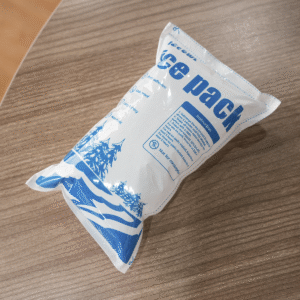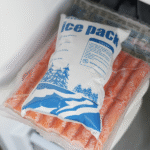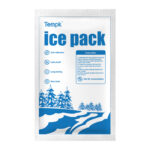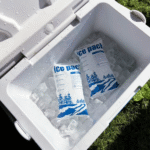Ensuring the efficacy of vaccines during transport is critical, as even slight temperature fluctuations can compromise their effectiveness. Dry ice packs are an essential tool in the cold chain logistics of temperature-sensitive vaccines. These packs ensure that vaccines remain within the required temperature range throughout transit, preserving their potency and safety. In this article, we will explore the role of dry ice packs in vaccine transport, their benefits, and the best practices for using them in 2025.
-
What are dry ice packs, and how do they work for vaccine transport?
-
What are the benefits of using dry ice over other cooling methods for vaccine shipping?
-
How do businesses ensure safety and compliance when using dry ice packs in vaccine transport?
-
What are the latest trends and innovations in dry ice usage for cold chain logistics?
What Are Dry Ice Packs, and How Do They Work for Vaccine Transport?
Dry ice is the solid form of carbon dioxide, and it sublimates directly from a solid to a gas at a temperature of -78.5°C (-109.3°F). This unique property allows dry ice packs to maintain extremely low temperatures, which is crucial for transporting vaccines that require storage at ultra-low temperatures. Unlike conventional ice, which melts and can cause water contamination, dry ice does not leave any residue, making it ideal for maintaining the cold chain during vaccine transport.
When placed in insulated containers, dry ice absorbs heat from the surrounding environment, creating a consistent and cold atmosphere to protect temperature-sensitive vaccines. The slow sublimation process ensures that vaccines remain within the critical temperature range for extended periods, whether during domestic or international shipments.
How Do Dry Ice Packs Maintain Consistent Temperature During Transport?
Dry ice sublimates slowly, releasing cold gas that absorbs heat from the surrounding air. This process maintains a steady temperature environment, making it highly effective for keeping vaccines below freezing. Depending on the amount of dry ice used, temperatures can be maintained for up to 72 hours or more.
| Temperature Control Method | Timeframe | Effectiveness | Practical Application |
|---|---|---|---|
| Dry Ice | 24-72 hours | Highly Effective | Long-haul vaccine transport |
| Gel Packs | 12-24 hours | Moderate | Short-distance shipments |
| Ice Packs | Varies | Low to Moderate | Suitable for non-temperature-sensitive products |
Real-Life Examples of Dry Ice Packs in Vaccine Transport
-
Scenario 1: A healthcare provider uses dry ice to transport vaccines to rural areas, ensuring that the vaccines remain viable even with limited access to refrigeration.
-
Scenario 2: An international logistics company specializing in pharmaceutical shipments uses dry ice to maintain the cold chain for global vaccine distribution.
Real-Life Case: A logistics provider in Europe successfully transported COVID-19 vaccines using dry ice packs, ensuring that vaccines remained within the required temperature range throughout the long international journey, with a 100% success rate in preserving their efficacy.
What Are the Benefits of Using Dry Ice for Vaccine Shipping?
Key Benefits
-
Effective Long-Term Cooling: Dry ice can maintain ultra-low temperatures for an extended period, which is essential for vaccines that require freezing conditions, such as mRNA vaccines.
-
Non-Toxic and Safe: Unlike gel packs, dry ice does not leave any liquid residue that could damage vaccines or packaging. It sublimates directly into gas, reducing the risk of contamination.
-
Versatile Shipping: Dry ice is adaptable for small-scale and large-scale shipments, and the amount used can be adjusted depending on the specific needs of the vaccine.
Additional Advantages
-
Cost-Efficiency: Although the initial cost may be higher than some cooling methods, the use of dry ice can reduce losses due to spoilage, leading to long-term savings.
-
Reduced Spoilage and Losses: By maintaining consistent temperatures, dry ice helps to ensure that vaccines reach their destination without compromising quality.
Safety Considerations When Handling Dry Ice
Handling dry ice requires careful attention due to its extremely cold temperature and the risk of CO₂ buildup. The following safety precautions should be observed when using dry ice for vaccine transport:
-
Ventilation: Ensure that all containers are vented to release CO₂ gas to prevent pressure buildup that could cause rupture.
-
Protective Gear: Personnel should wear insulated gloves and safety goggles when handling dry ice to prevent frostbite and eye injury.
-
Proper Storage: Dry ice should never be stored in an airtight container. Always store it in a well-ventilated area.
How Dry Ice Packs Compare to Other Cooling Methods
Dry ice is the best solution for vaccines requiring deep-freeze conditions, such as mRNA vaccines. However, for vaccines that only need refrigeration (2-8°C), gel packs or phase change materials (PCMs) are suitable alternatives. Here’s a quick comparison:
| Cooling Method | Temperature Range | Cooling Duration | Regulatory Considerations |
|---|---|---|---|
| Dry Ice | -78.5°C | Up to 72 hours | Classified as hazardous material; requires IATA and CFR compliance |
| Gel Packs | 2-8°C | Up to 24 hours | No special hazardous classification |
| PCMs | 2-8°C, -20°C, or custom ranges | Varies based on PCM type | Can be used for non-ultracold vaccines |
Latest Trends and Innovations in Dry Ice Usage for Vaccine Transport
Sustainable Dry Ice Production
In 2025, dry ice production is becoming more sustainable, with innovations like carbon capture methods helping to reduce environmental impacts. Companies are exploring more eco-friendly production methods to meet the increasing demand for cold chain logistics.
Real-Time Temperature Monitoring
With the growing importance of precise temperature control, real-time monitoring technology has become a critical part of vaccine transport. IoT-enabled sensors are now being used to continuously track the temperature of vaccine shipments, ensuring that they stay within the required range.
Frequently Asked Questions About Dry Ice and Vaccine Transport
Q: How long do dry ice packs last for vaccine transport?
A: Dry ice packs typically maintain their cooling power for 24-72 hours, depending on the quantity of dry ice and the quality of insulation used.
Q: Is dry ice safe to handle?
A: While dry ice is safe with proper precautions, it must be handled with care. Always use gloves and ensure that storage areas are well-ventilated to prevent CO₂ buildup.
Conclusion and Recommendations
In summary, dry ice packs are essential for transporting vaccines that require ultra-low temperatures. Their ability to maintain consistent and cold temperatures for extended periods makes them indispensable in the cold chain logistics industry. Businesses involved in vaccine transport should invest in dry ice solutions to reduce spoilage, ensure compliance with regulations, and improve the reliability of their shipping processes.
Next Steps
To optimize your vaccine transport processes, start by evaluating your current cold chain logistics. Consider working with a logistics provider that specializes in dry ice and other cold chain solutions to ensure the safe and effective delivery of vaccines.
About Tempk
Tempk is a leading provider of advanced cold chain solutions, specializing in dry ice packs and insulated shipping containers for the transportation of pharmaceuticals and biologics. We are committed to providing safe, efficient, and environmentally responsible solutions that help businesses meet their cold chain logistics needs.
Contact us today for expert advice on optimizing your vaccine transport logistics!
























